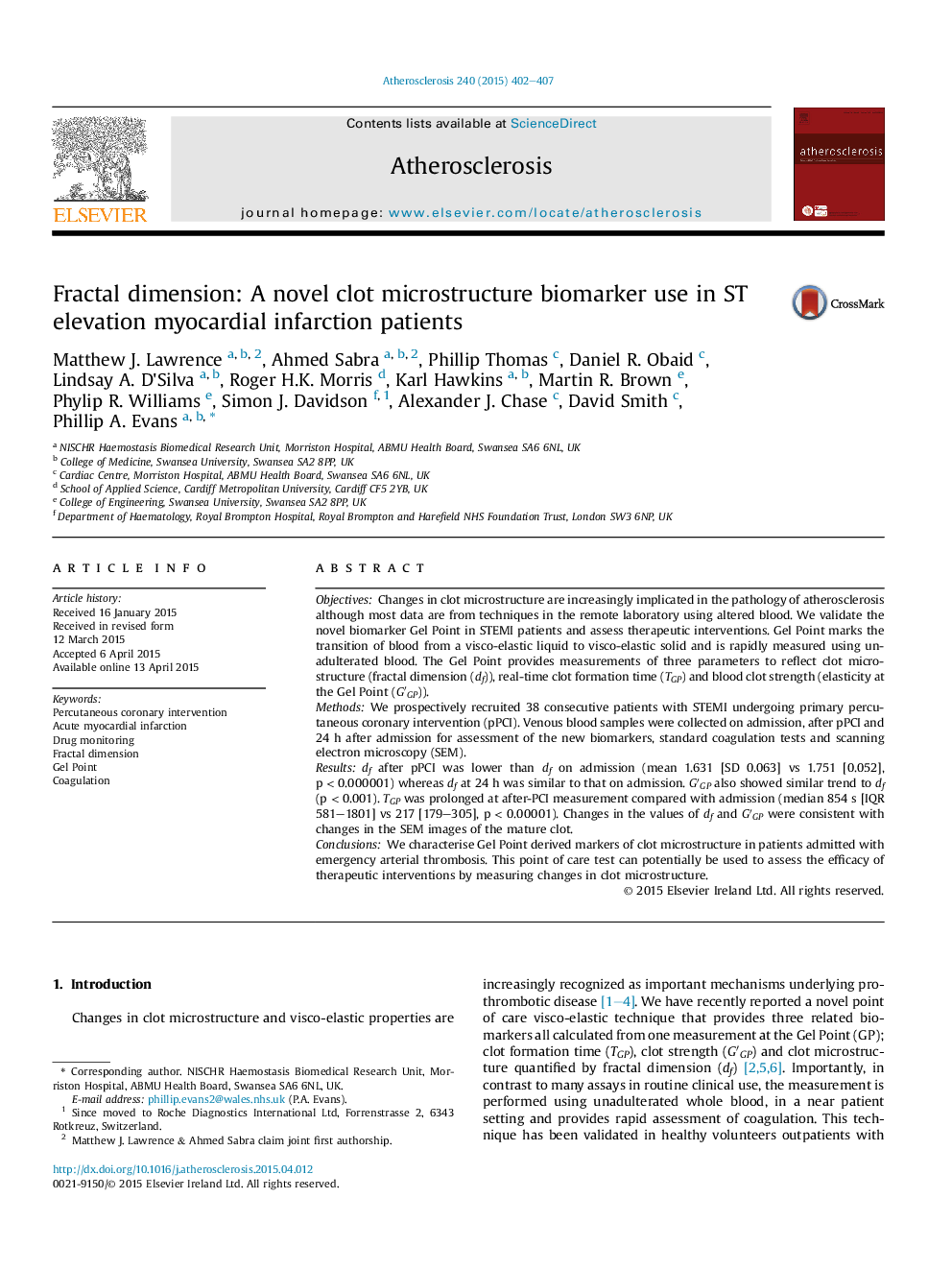| Article ID | Journal | Published Year | Pages | File Type |
|---|---|---|---|---|
| 5943960 | Atherosclerosis | 2015 | 6 Pages |
â¢We performed a study using a new coagulation biomarker in myocardial infarction.â¢The new biomarker measures how quick the clot forms, its strength and structure.â¢Therapeutic intervention caused significant changes in clot structure.â¢Changes in the new biomarker were consistent with standard SEM images of the clot.
ObjectivesChanges in clot microstructure are increasingly implicated in the pathology of atherosclerosis although most data are from techniques in the remote laboratory using altered blood. We validate the novel biomarker Gel Point in STEMI patients and assess therapeutic interventions. Gel Point marks the transition of blood from a visco-elastic liquid to visco-elastic solid and is rapidly measured using unadulterated blood. The Gel Point provides measurements of three parameters to reflect clot microstructure (fractal dimension (df)), real-time clot formation time (TGP) and blood clot strength (elasticity at the Gel Point (Gâ²GP)).MethodsWe prospectively recruited 38 consecutive patients with STEMI undergoing primary percutaneous coronary intervention (pPCI). Venous blood samples were collected on admission, after pPCI and 24 h after admission for assessment of the new biomarkers, standard coagulation tests and scanning electron microscopy (SEM).Resultsdf after pPCI was lower than df on admission (mean 1.631 [SD 0.063] vs 1.751 [0.052], p < 0.000001) whereas df at 24 h was similar to that on admission. Gâ²GP also showed similar trend to df (p < 0.001). TGP was prolonged at after-PCI measurement compared with admission (median 854 s [IQR 581-1801] vs 217 [179-305], p < 0.00001). Changes in the values of df and Gâ²GP were consistent with changes in the SEM images of the mature clot.ConclusionsWe characterise Gel Point derived markers of clot microstructure in patients admitted with emergency arterial thrombosis. This point of care test can potentially be used to assess the efficacy of therapeutic interventions by measuring changes in clot microstructure.
